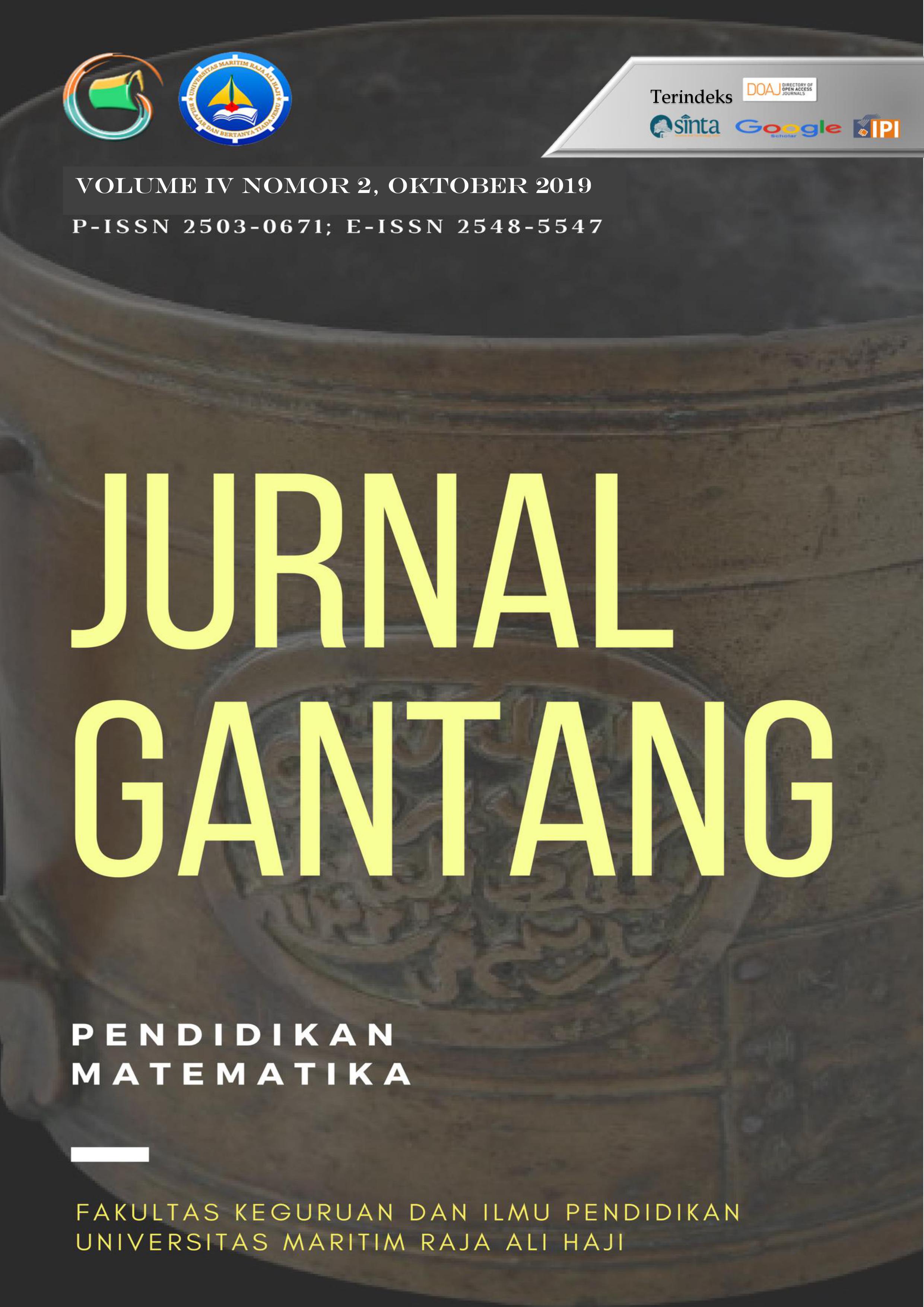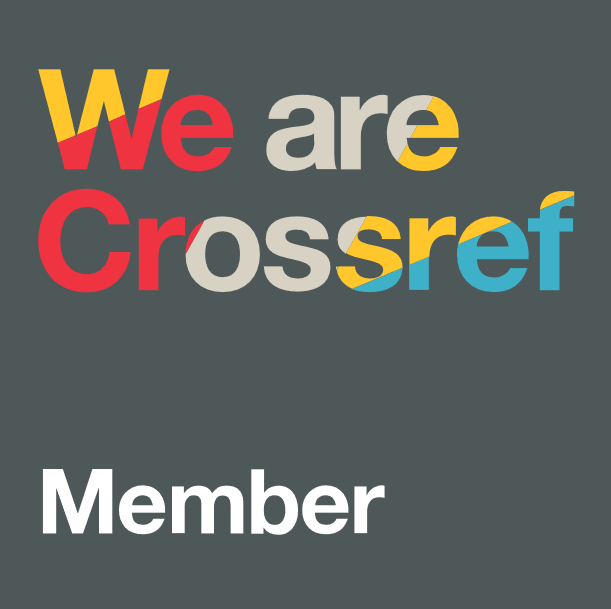Deskripsi Kemampuan Komunikasi Matematika Dalam Menyelesaikan Soal Pemecahan Masalah Matematika Berdasarkan Gender
DOI:
https://doi.org/10.31629/jg.v4i2.1336Keywords:
Communication of mathematics, Problem solving, GenderAbstract
This research is qualitative research with the aim of (1) to find out the description of mathematical communication skills of male and female students in solving mathematical problem solving questions, (2) to find out different information about mathematical communication descriptions in solving problem solving problems in terms of gender. The subjects of this study were two class VII students of SMP Negeri 2 Labakkang, namely one male and one female student who had the highest problem solving test scores. The procedure of data collection is done by observation, tests of problem solving and interviews. The research instrument was used in the form of observation sheets, tests of problem solving, interview guidelines. Data analysis techniques are carried out by testing credibility, transferbility, dependability, and conformability. The results showed that the mathematical communication skills of male gender subjects were lower than those of female gender subjects. The location of differences in mathematical communication skills between male and female gender is that the indicators write answers according to the purpose of the problem and make conclusions in writing using their own language.
Downloads
References
Ahmad, A., Sitti, S. ., & Rozianti, Z. (2008). A Cognitive tool to support mathematical communication in fraction word problem solving. Weseas Trasactions on Computer, 7, 228–236.
Ahmad, M., & Nasution, D. P. (2018). Analisis kualitatif kemampuan komunikasi matematis siswa yang diberi pembelajaran matematika realistik. Jurnal Gantang, III(2), 83–95. https://doi.org/https://doi.org/10.31629/jg.v3i2.471
Amir, Z. (2013). Perspektif gender dalam pembelajaran matematika. Marwah, XII(1), 14–31.
Arwinie, N. (2014). Meningkatkan kemampuan penalaran dan komunikasi matematis serta self concept MTS melalui pembelajaran berbasis masalah. (Unpulished Master Thesis). Sekolah Pascasarjana Universitas Pendidikan Indonesia.
Awaliyah, T. (2014). Pembelajaran untuk meningkatkan kemampuan komunikasi dan pemecahan masalah matematik. In Prosiding Volume 1 Seminar Nasional Pendidikan Matematika (pp. 180–187). Bandung: PPs STKIP Siliwangi.
Dewi, I. (2009). Profil komunikasi mahasiswa calon guru ditinjau dari perbedaan jenis kelamin. (Unpulished Doctoral Disertation ).PPS Universitas Negeri Surabaya.
Fuentes, P. (1998). Reading comprehension in mathematics. The Clearing House, 72(2), 81–88.
Gantinah, T. (2014). Meningkatkan kemampuan komunikasi dan koneksi matematis serta kemandirian belajar siswa sma melalui pembelajaran berbasis masalah. In Prosiding Volume 1 Seminar Nasional Pendidikan Matematika (pp. 408–418). Bandung: PPs STKIP Siliwangi.
Gross, J., & Thompson, R. (2007). emotion regulation: conceptual foudation. (Handbook o). New York: Guilford Publication.
Halpern, Diane, F. (2004). A Cognitive - Process taxonomy for sex differences in cognitive abilities. Current Direction in Psycological Science, 22(1), 68–72. https://doi.org/10.1111/j.0963-7214.2004.00292.x
Murtafiah, W. (2016). Kemampuan komunikasi matematika mahasiswa calon guru matematika dalam menyelesaikan masalah persamaan diferensial ditinjau dari gender. Jurnal Math Educator Nusantara, 2(1), 31–41.
Naftah, L. (2014). Pengaruh kemampuan spesial berdasarkan gender terhadap hasil belajar pada materi dimensi tiga siswa kelas X di MAN Rojetongan. (Unpulished Master Thesis). Institut Agama Islam Negeri Tulungagung.
Ningsih, R. (2014). Efektifitas pendekatan kontekstual untuk peningkatan kemampuan komunikasi, pemecahan Masalah dan emandirian belajar siswa SMP. In Prosiding Volume 1 Seminar Nasional Pendidikan Matematika (pp. 320–324). Bandung: PPs STKIP Siliwangi.
Nofrianto, A., Maryuni, N., & Amri, M. A. (2017). Komunikasi matematis siswa : pengaruh pendekatan matematika realistik. Jurnal Gantang, II(2), 113–122. https://doi.org/https://doi.org/10.31629/jg.v2i2.199
Osterholm, M. (2006). Metakognition and reading-criteria for comprehension of mathematics text. In Proceedings 30th Conference of International Group for the Psychology of Mathematics Education Vol. 4 (pp. 289–296). Prague: PME.
Setiawati, A. (2014). Meningkatkan kemampuan pemecahan masalah matematika siswa smp melalui pembelajaran kontekstual. In Prosiding Volume 1 Seminar Nasional Pendidikan Matematika (pp. 283–294). Bandung: PPS STKIP Siliwangi.
Susilowati, J. P. A. (2016). Profil penalaran siswa SMP dalam pemecahan masalah matematika ditinjau dari perbedaan gender. Jurnal Review Pembelajaran Matematika, 1(2), 132–148.
Wahyuddin. (1999). Kemampuan guru matematika, calon guru matematika, dan siswa dalam mata pelajaran matematika. (Unpulished Doctoral Disertation). Sekolah Pascasarjana Universitas Pendidikan Matematika.
Wijaya, H. P. I., Sujadi, I., & Riyadi. (2016). Kemampuan komunikasi matematis siswa sesuai dengan gender dalam pemecahan masalah pada materi balok dan kubus (studi kasus pada siswa SMP kelas VIII SMP Islam Al Azhar 29 Semarang). Jurnal Elektronik Pembelajaran Matematika, 4(9), 778–788.


















